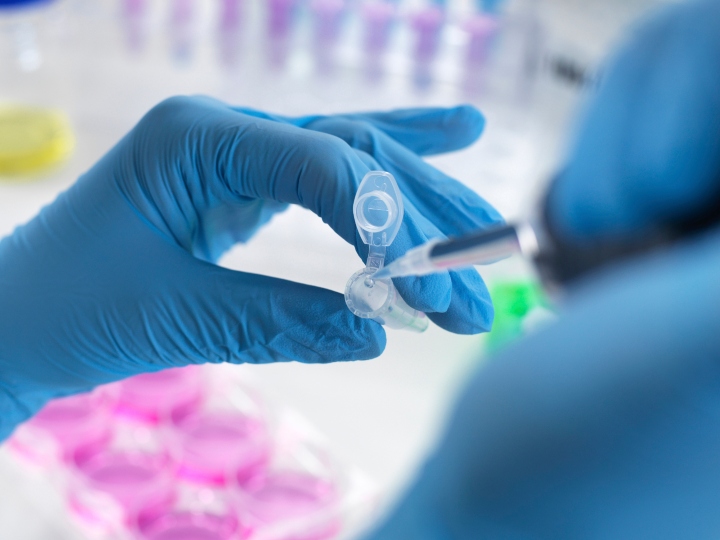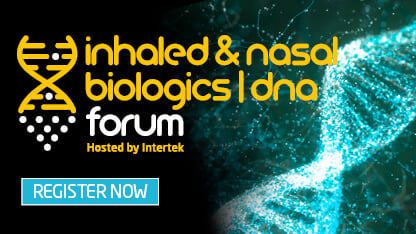Comparability studies for protein therapeutics and biologics according to ICH Q5E including physiochemical properties, structure, conformation and potency characterization
Comparability studies are key to ensuring that a manufacturing process change will not have an adverse impact on the quality, safety (e.g. immunogenicity) or efficacy of a biologic or biopharmaceutical product.
Under the principals of the ICH Q5E Comparability of Biotechnological/Biological Products guideline, comparability studies should provide analytical confirmation that your drug substance or drug product has highly similar quality attributes before and after manufacturing process changes. Changes to manufacturing processes of products can be necessary during development and after approval, perhaps due to driving improvements in scale, product quality or product stability. Changes to processes can also be necessary to respond to changes in regulatory requirements.
Our comparability studies team design bespoke analytical programmes that ensure that the relevant quality attributes for your drug substance or drug product are evaluated to support your manufacturing process changes. We select protein analytics referenced by the ICH Q6B Guideline to carefully examine the product from all aspects including biologic structural features including primary, secondary and higher order structure and assessment of post-translational modifications (PTM), glycosylation, physicochemical properties, biological activity /potency and immunogenicity in order to demonstrate that modifications did not occur which may adversely impact the safety and efficacy of the drug. We also assess purity/impurity profiles and can conduct comparability to Good Laboratory Practice (GLP) or Good Manufacturing Practice (cGMP) standards.
Our laboratories are equipped with a broad technology base and our strengths in mass spectrometry (Orbitrap and QToF) analysis, in particular, allow the ability to provide high-resolution, accurate-mass (HRAM) data. Based on many years of experience, our strategic approach to comparability programs means that we select from many different analytical techniques to deliver highly relevant comparability study programmes for proteins, antibodies, antibody drug conjugates, biosimilars, oligonucleotides and other biologic products.
Biosimilarity Programs
Our teams provide analytical programs to demonstrating biosimilarity to a reference product which allows highly relevant early-stage characterisation and later-stage comparative data. These programs evaluate and compare all pertinent features of the biosimilar product and are based on the criteria outlined in ICH Q6B.
Your Comparability Study Services Partner
As your comparability outsourcing service provider, we apply our knowledge of detailed analytics to evaluate the key quality attributes of your drug substance or drug product to help you ensure that manufacturing process changes do not impact product quality, efficacy or safety. Across your product’s lifecycle, from early-stage through to later-phase development, CMC requirements and ongoing production, we apply our Total Quality Assurance expertise to meet your comparability study needs in line with the latest regulatory requirements.
Where cysteine residues are present in the molecule, our scientists perform a qualitative / semi-quantitative assessment of the position and extent of expected and mismatched disulphide bridges by high resolution mass spectrometry (Orbitrap, QToF) and colorimetric tests for free sulfhydryl groups.
Pharmaceutical News & Events
- PRESS RELEASE: Lab expansion to enhance capabilities in inhaled biologics drug development
- PRESS RELEASE: Intertek partners with CrystecPharma to advance formulation science and accelerate development for dry powder inhalers
- NEW! Blog: Optimising Quality in Pharma Supply Chains
- Determination of Particles in Pharmaceuticals - Article
- Discover our Audit Live Tool for direct access to our scheduled audits
- Extractables/Leachables Lab Tour - Request access
- Medical Device Extractables & Leachables Studies
- Glycosylation Analytical Approaches for Antibody Therapeutics
- Rapid Determination of Low/Trace Level Benzene in Pharmaceutical Excipients and Finished Products

COVID-19 VACCINE OR THERAPEUTIC TESTING & DEVELOPMENT SUPPORT
IMMEDIATE QUESTION? Ask our experts now
FACTSHEET: COVID-19 Vaccine or Therapeutic Testing & Development Outsourcing
ARTICLE: Repurposing Vaccines for Intranasal Development
WEBINAR: Quality Control Strategy for Vaccine Development
WEBINAR: Repurposing Drugs for Inhaled Delivery
eBOOK: Contingency Outsourcing Solutions


